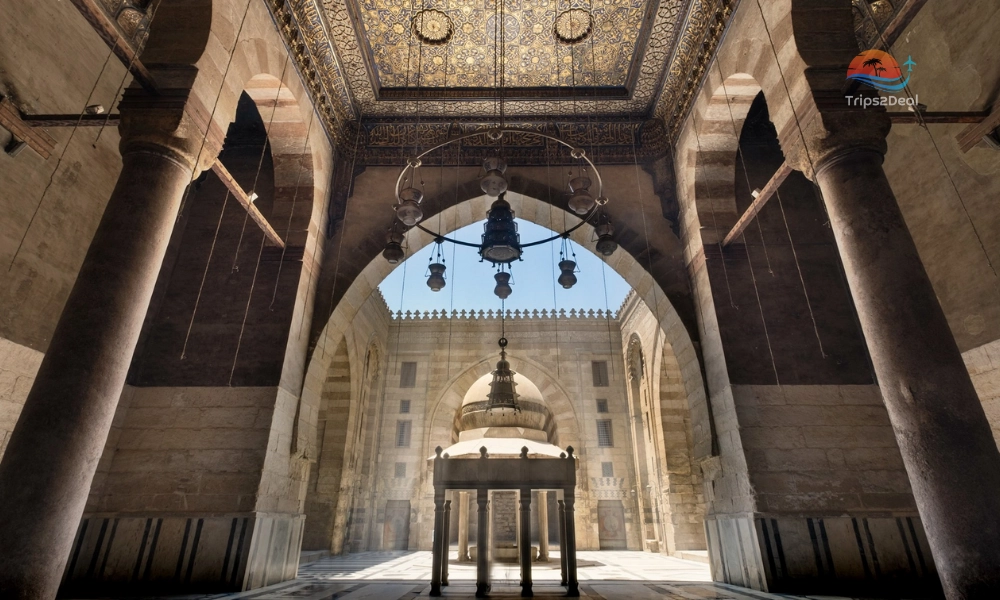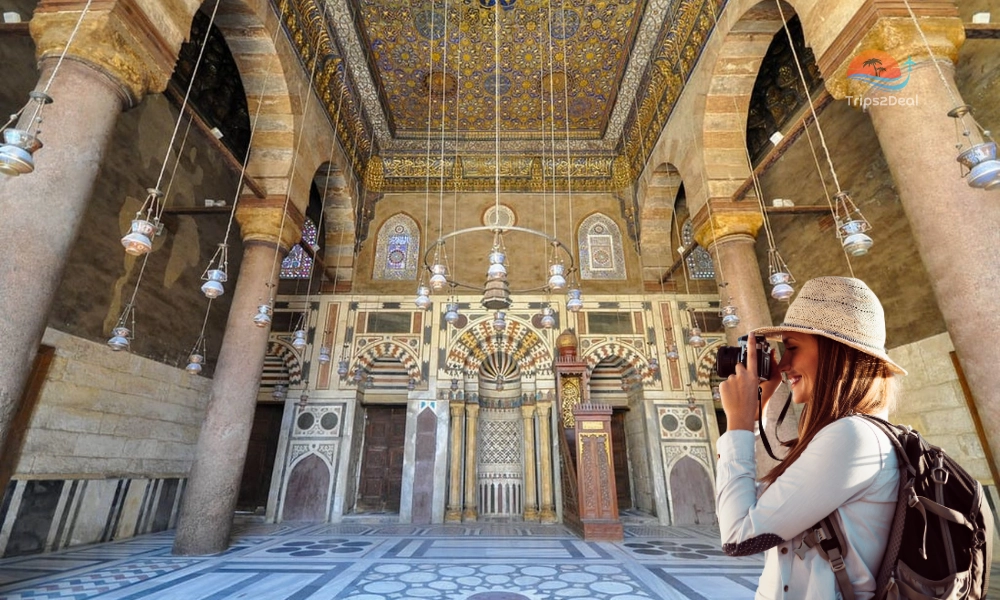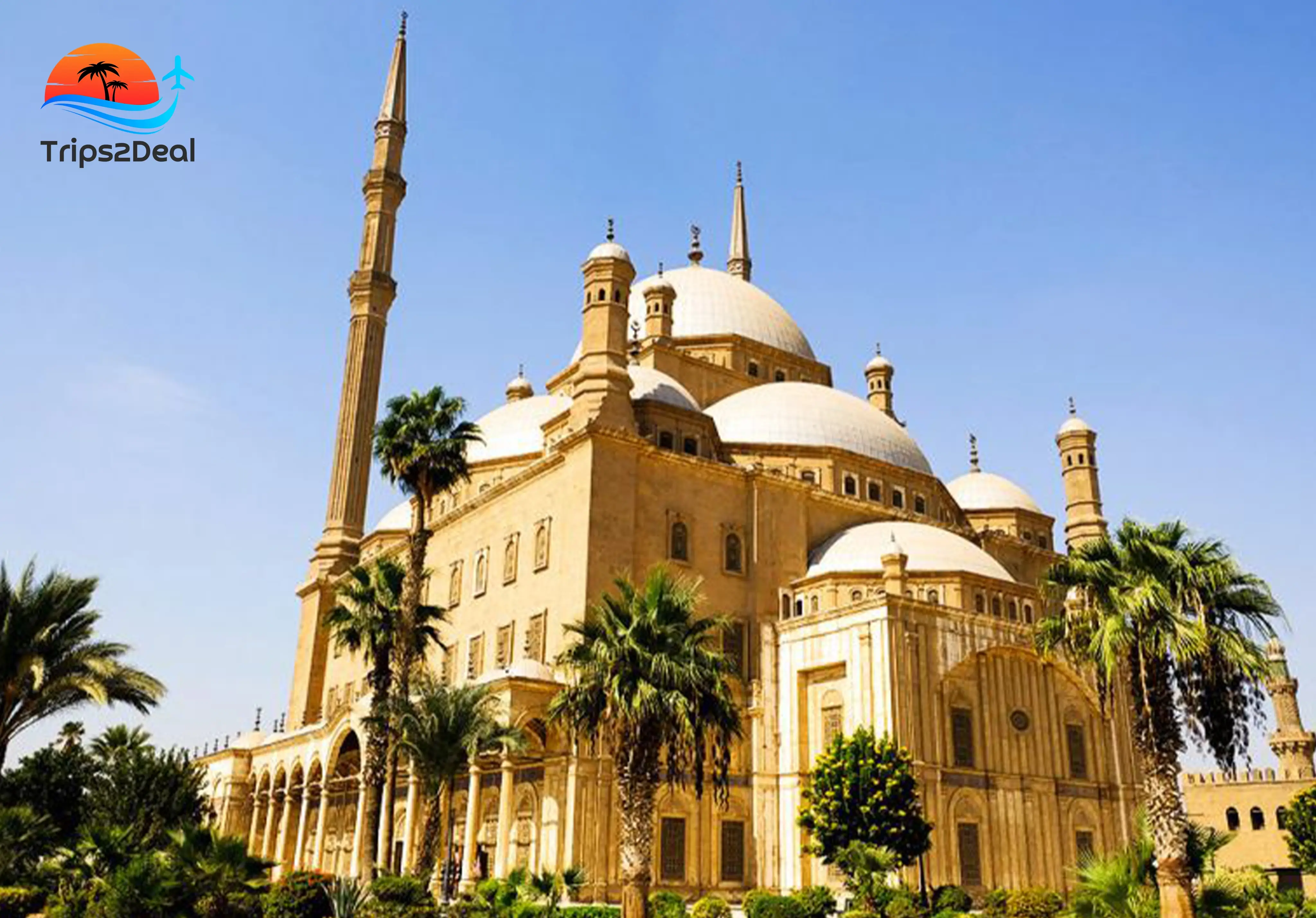Blogs

Qalawun Mosque
In the middle of Islamic Cairo, where the minarets cross the sky and stone streets reflect centuries of devotion, the Qalawun Mosque stands out as most of the magnificent religious and architectural traditions. This is situated on the famous Al-Muizz Street, considered a huge part of the larger Qalawun Complex, a traditional icon that highlights the spirit of 13th-century Cairo.
This is one of the most Islamic Cairo landmarks that highlights the architectural innovation and royal objectives. This is enriched with history, architectural framework, and highlights traditional roles that make it one of the best historic mosques in Egypt.
Table of Contents
Mamluk Cairo and Sultan Qalawun
Architectural Brilliance of the Qalawun Complex
The Mosque Religious Significance:
The Bimaristan: One of the Oldest Hospitals in Cairo:
Mamluk Cairo and Sultan Qalawun
The Mamluk dynasty in Egypt reached prominence in the 13th century, bringing the new aesthetics of Islamic art, scholarship, and structure. It was during this golden age that Sultan Al-Mansur Qalawun, a former slave turned ruler, emerged as one of the most influential figures in medieval Islamic history.
- Sultan Qalawun’s reign (1279–1290) was marked by military success, political reform, and significant patronage of the arts and sciences.
- He envisioned a complex that would serve both God and society, combining a mosque, madrasa (school), mausoleum, and bimaristan (hospital) all in one.
- This multi-functional design reflected his dedication to spiritual life, education, healthcare, and legacy-building.
Architectural Brilliance of the Qalawun Complex
The Qalawun Mosque framework is the iconic masterpiece of Mamluk architecture in Cairo, offering a mix of Islamic, Gothic, and even Crusader-influenced elements.
Artwork Framework: The Mosques highlighted the drawn arches and vaulted ceilings, presenting a Gothic impact, mainly stimulated by Crusader structures in the Levant.
Highlighted Elements:
-
- Mosque: For prayer and public worship.
- Madrasa: For religious and academic learning.
- Mausoleum: The burial chamber of Sultan Qalawun.
- Bimaristan: A hospital that was once among the most advanced in the medieval Islamic world.
- Artistic highlights: Use of colored marble, carved stucco, stained glass, inlaid wood, and mother-of-pearl to create stunning interiors.

The Mosque Religious Significance:
Every art plays an important role in a legacy. Architecture is heartwarming, but a religious role has been considered as the center of it.
- This mosque is the heart of Islamic prayer in Cairo, drawing the attention of millions of worshippers for centuries.
- Islamic scholars used the attached madrassa as a home for them. It helps them to learn Islamic courses and advanced theological studies conveniently.
- This Qalawun mosque contributed its role in the religious life of Islamic Cairo, serving as a middle zone for Islamic events and community festivals.
A Royal Resting Place:
In the middle of the complex, there is Sultan Qalawun’s tomb, showcasing heartwarming examples of Mamluk funerary architecture.
- Architecture frameworks: Marble, mosaic, and arabic calligraphy are highly labelled on the tomb, enhancing the decoration.
- The dome above the chamber is one of the oldest and most admired in Cairo, setting a symbolic trend for future royal tombs.
- In contrast with other mausoleums in Cairo, Qalawun’s tomb is considered as of the most admired, because of long-lasting religious devotion and royal pride.
The Bimaristan: One of the Oldest Hospitals in Cairo:
Bimaristan or hospital is one of the most appreciative and progressive works of the complex.
- This complex offers free healthcare, medicine, and psychiatric care, which is well-known at the time.
- The Qalawun Mosque offers an operational hospital, working as a middle zone for medical education, attracting doctors from all over the Islamic world.
- This embarks on the advancements in medieval Islamic medicine and Qalawun’s devotion to public service.
Restoration and Preservation:
Time, Pollution, and Urban pressure are a source of risks for the beauty of complexes for many years.
- Complex is facing huge restoration challenges since the 20th century and till now.
- The UNESCO and Egyptian government have collaborated for the restoration of this place, because it is an obligation for authorities to preserve the reputation of Islamic Cairo’s UNESCO-listed heritage.
- Qalawun Mosque’s architecture is facing major challenges like preserving fragile wood art, marble facades, and mosaics without affecting their credibility.
Qalawun Mosque in Modern Culture and Media
The mosque continues to be celebrated in modern culture, both in Egypt and beyond.
- Documentaries, history books, and travel media mentioned the legacy and tradition of this Mosque, highlighting its art and historical role.
- Egyptians consider it a landmark icon for nationals, promoting Cairo's culture as a center of Islamic learning and artwork.
- This Mosque has huge fame, and more tourists come each year to explore the cultural events. This highlights the worth of Cairo’s historical places.

Wrapping Up: Landmark Symbol Stays in Stone
Qalawun Mosque reflects the legacy of faith, leadership, beauty, and values. This mosque has proved the genius of Sultan Qalawun and the grandeur of Mamluk Egypt, determining its significance from unparalleled architecture to its contribution to religion and the medical niche.
Among the most ancient mosques in Egypt, Qalawun Complex is one of the more complex structures than a monument, considering it a legacy of Cairo’s heritage. If you are considering visiting Cairo, exploring this unmatchable masterpiece will boost your faith and spiritual status by delivering an Islamic art of history and devotion.





